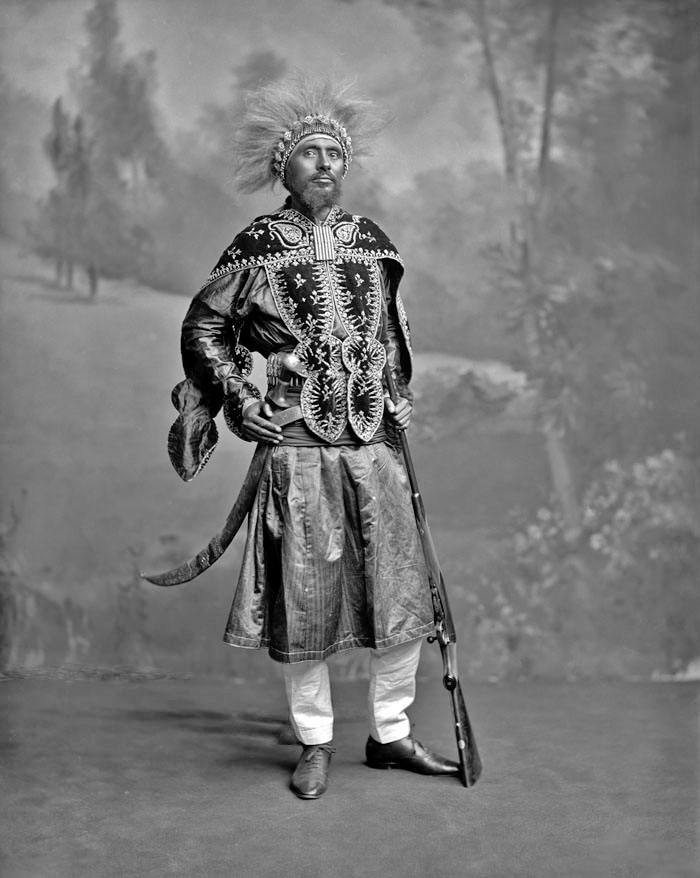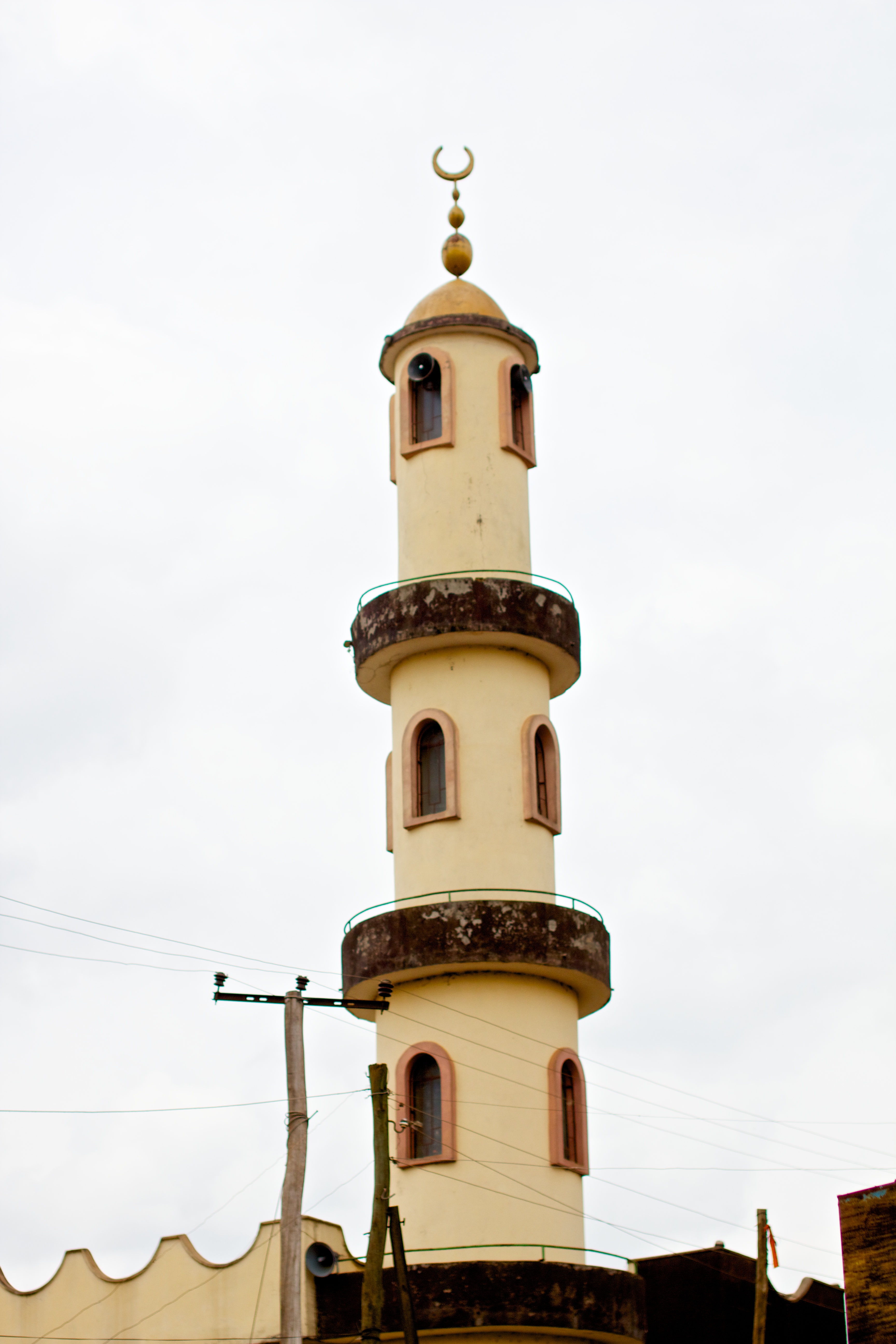|
Yeshimebet Ali
''Woizero'' Yeshimebet Ali was the wife of Ras Makonnen and mother of Emperor Haile Selassie of Ethiopia. She was the daughter of Dejazmatch Ali Gonshur, who was an Oromo from Jimma and a former trader from Gondar Gondar, also spelled Gonder (Amharic: ጎንደር, ''Gonder'' or ''Gondär''; formerly , ''Gʷandar'' or ''Gʷender''), is a city and woreda in Ethiopia. Located in the North Gondar Zone of the Amhara Region, Gondar is north of Lake Tana on t ....Herbert S. Lewis, ''A Galla Monarchy: Jimma Abba Jifar, Ethiopia'' (Madison, Wisconsin, 1965), p. 40 Yeshimebet died during her son's infancy. Her mother and her sister ''Woizero'' Mammit helped care for her young son as he grew to adulthood. She had eight miscarriages before giving birth to Haile Selassie. References Ethiopian Royal Family Year of death unknown 19th-century Ethiopian people Year of birth unknown {{Ethiopia-royal-stub Deaths in childbirth ... [...More Info...] [...Related Items...] OR: [Wikipedia] [Google] [Baidu] |
Makonnen Wolde Mikael
''Ras'' Makonnen Wolde Mikael Wolde Melekot (Amharic: ራስ መኮንን ወልደ ሚካኤል ወልደ መለኮት; 8 May 1852 – 21 March 1906), or simply Ras Makonnen, also known as Abba Qagnew (አባ ቃኘው), was a Shewan royal from Menz, a military leader, the governor of Harar province in the Ethiopian Empire, and the father of Tafari Makonnen (later known as Emperor Haile Selassie). His father was ''Dejazmach'' Wolde Mikael Wolde Melekot of Shewa. Makonnen was a grandson of ''Negus'' Sahle Selassie of Shewa through his mother, ''Woizero'' Tenagnework Sahle Selassie. As such, he was a first cousin of the Ethiopian Emperor, Menelik II. He is best remembered as being one of the most effective generals during the First Italo-Ethiopian War, playing a key role at the Battle of Adwa and the Battle of Amba Alagi. Biography Governorship ''Ras'' Makonnen Wolde Mikael Wolde Melekot was born at Derefo Maryam near Ankober, Amhara region, in what was then in t ... [...More Info...] [...Related Items...] OR: [Wikipedia] [Google] [Baidu] |
Haile Selassie
Haile Selassie I ( gez, ቀዳማዊ ኀይለ ሥላሴ, Qädamawi Häylä Səllasé, ; born Tafari Makonnen; 23 July 189227 August 1975) was Emperor of Ethiopia from 1930 to 1974. He rose to power as Regent Plenipotentiary of Ethiopia (''Enderase'') for Empress Zewditu from 1916. Haile Selassie is widely considered a defining figure in modern Ethiopian history, and the key figure of Rastafari, a religious movement in Jamaica that emerged shortly after he became emperor in the 1930s. He was a member of the Solomonic dynasty, which claims to trace lineage to Emperor Menelik I, believed to be the son of King Solomon and Makeda the Queen of Sheba. Haile Selassie attempted to modernize the country through a series of political and social reforms, including the introduction of the 1931 constitution, its first written constitution, and the abolition of slavery. He led the failed efforts to defend Ethiopia during the Second Italo-Ethiopian War and spent most of the period o ... [...More Info...] [...Related Items...] OR: [Wikipedia] [Google] [Baidu] |
Oromo People
The Oromo (pron. Oromo: ''Oromoo'') are a Cushitic ethnic group native to the Oromia region of Ethiopia and parts of Northern Kenya, who speak the Oromo language (also called ''Afaan Oromoo'' or ''Oromiffa''), which is part of the Cushitic branch of the Afroasiatic language family. They are the largest ethnic group in Ethiopia and represent a large portion of Ethiopia's population. The Oromo people traditionally used the ''gadaa'' system as the primary form of governance.Harold G. MarcuA History of Ethiopia University of California Press (1994) pp. 55 Google Books A leader is elected by the ''gadaa'' system and their term lasts eight years, with an election taking place at the end of those eight years. Although most modern Oromos are Muslims and Christians, about 3% practice Waaqeffanna, the native ancient monotheistic religion of Oromos. Origins and nomenclature The Oromo people are one of the oldest cushitic peoples inhabiting the Horn of Africa, as there is still no corr ... [...More Info...] [...Related Items...] OR: [Wikipedia] [Google] [Baidu] |
Jimma
Jimma () is the largest city in southwestern Oromia Region, Ethiopia. It is a special zone of the Oromia Region and is surrounded by Jimma Zone. It has a latitude and longitude of . Prior to the 2007 census, Jimma was reorganized administratively as a special Zone. History What is now Jimma's northern suburb of Jiren was the capital of a large Kaffa province until the Oromos migrated to the region in the 18th century. Originally named ''Hirmata'' before the Oromo invasion. The city owed its importance in the 19th century to being located on the caravan route between Shewa and the Kingdom of Kaffa, as well as being only six miles from the palace of the king of Jimma. According to Donald Levine, in the early 19th century the market attracted thousands of people from neighboring regions: "Amhara from Gojjam and Shoa, Oromo from all the Gibe Kingdoms and numerous representatives of the Lacustrine and Omotic groups, including Timbaro, Qabena, Kefa, Janjero, Welamo, Konta and ... [...More Info...] [...Related Items...] OR: [Wikipedia] [Google] [Baidu] |
Gondar
Gondar, also spelled Gonder (Amharic: ጎንደር, ''Gonder'' or ''Gondär''; formerly , ''Gʷandar'' or ''Gʷender''), is a city and woreda in Ethiopia. Located in the North Gondar Zone of the Amhara Region, Gondar is north of Lake Tana on the Lesser Angereb River and southwest of the Simien Mountains. , Gondar has an estimated population of 443,156. Gondar previously served as the capital of both the Ethiopian Empire and the subsequent Begemder Province. The city holds the remains of several royal castles, including those in the Fasil Ghebbi UNESCO World Heritage Site for which Gondar has been called the "Camelot of Africa". History Origins Until the 16th century, the Solomonic Emperors of Ethiopia usually had no fixed capital town, but instead lived in tents in temporary royal camps as they moved around their realms while their family, bodyguard and retinue devoured surplus crops and cut down nearby trees for firewood. One exception to this rule was Debre Be ... [...More Info...] [...Related Items...] OR: [Wikipedia] [Google] [Baidu] |
Ethiopian Royal Family
Ethiopians are the native inhabitants of Ethiopia, as well as the global diaspora of Ethiopia. Ethiopians constitute several component ethnic groups, many of which are closely related to ethnic groups in neighboring Eritrea and other parts of the Horn of Africa. The first documented use of the name "Ethiopia" from Greek name "Αἰθίοψ" (Ethiopian) was in the 4th century during the reign of Aksumite king Ezana. There were three ethnolinguistic groups in the Kingdom of Aksum; Semitic, Cushitic, and Nilo-Saharan (ancestors of the modern-day Kunama and Nara). The Kingdom of Aksum remained a geopolitically influential entity until the pillage of its capital — also named Axum — in the 10th century by Queen Gudit. Nevertheless, the core Aksumite civilization was preserved and continued into the successive Zagwe dynasty. By this time, new ethnic groups emerged – the Tigrayans and Amharas. During the Solomonic period, the latter established major political and cultural in ... [...More Info...] [...Related Items...] OR: [Wikipedia] [Google] [Baidu] |
Year Of Death Unknown
A year or annus is the orbital period of a planetary body, for example, the Earth, moving in its orbit around the Sun. Due to the Earth's axial tilt, the course of a year sees the passing of the seasons, marked by change in weather, the hours of daylight, and, consequently, vegetation and soil fertility. In temperate and subpolar regions around the planet, four seasons are generally recognized: spring, summer, autumn and winter. In tropical and subtropical regions, several geographical sectors do not present defined seasons; but in the seasonal tropics, the annual wet and dry seasons are recognized and tracked. A calendar year is an approximation of the number of days of the Earth's orbital period, as counted in a given calendar. The Gregorian calendar, or modern calendar, presents its calendar year to be either a common year of 365 days or a leap year of 366 days, as do the Julian calendars. For the Gregorian calendar, the average length of the calendar year ... [...More Info...] [...Related Items...] OR: [Wikipedia] [Google] [Baidu] |
19th-century Ethiopian People
The 19th (nineteenth) century began on 1 January 1801 ( MDCCCI), and ended on 31 December 1900 ( MCM). The 19th century was the ninth century of the 2nd millennium. The 19th century was characterized by vast social upheaval. Slavery was abolished in much of Europe and the Americas. The First Industrial Revolution, though it began in the late 18th century, expanding beyond its British homeland for the first time during this century, particularly remaking the economies and societies of the Low Countries, the Rhineland, Northern Italy, and the Northeastern United States. A few decades later, the Second Industrial Revolution led to ever more massive urbanization and much higher levels of productivity, profit, and prosperity, a pattern that continued into the 20th century. The Islamic gunpowder empires fell into decline and European imperialism brought much of South Asia, Southeast Asia, and almost all of Africa under colonial rule. It was also marked by the collapse of the large ... [...More Info...] [...Related Items...] OR: [Wikipedia] [Google] [Baidu] |
Year Of Birth Unknown
A year or annus is the orbital period of a planetary body, for example, the Earth, moving in its orbit around the Sun. Due to the Earth's axial tilt, the course of a year sees the passing of the seasons, marked by change in weather, the hours of daylight, and, consequently, vegetation and soil fertility. In temperate and subpolar climate, subpolar regions around the planet, four seasons are generally recognized: spring (season), spring, summer, autumn and winter. In tropics, tropical and subtropics, subtropical regions, several geographical sectors do not present defined seasons; but in the tropics#Seasons and climate, seasonal tropics, the annual wet season, wet and dry seasons are recognized and tracked. A calendar year is an approximation of the number of days of the Earth's orbital period, as counted in a given calendar. The Gregorian calendar, or modern calendar, presents its calendar year to be either a common year of 365 days or a leap year of 366 days, as do t ... [...More Info...] [...Related Items...] OR: [Wikipedia] [Google] [Baidu] |





